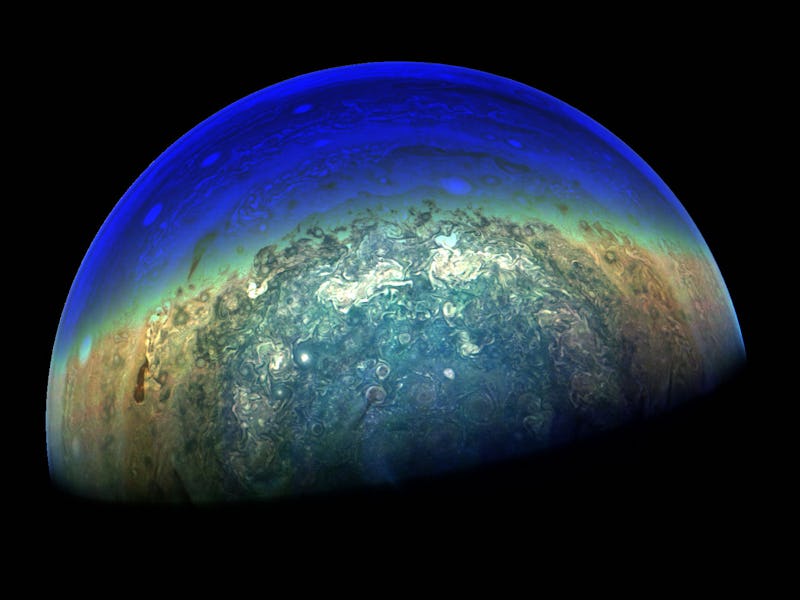Jupiter's South Pole Looks Like a Literal Gem in New Enhanced Image
Welcome to Jupiter's twilight zone.

NASA’s Juno spacecraft has once again proven itself to be the Ansel Adams of the cosmos.
On February 7, the orbiter snapped a photo of Jupiter’s swirling gas formations at its south pole during its 11th close flyby. The raw image, taken while Juno was 74,896 miles from the planet’s cloud tops, was then enhanced by citizen scientist Gerald Eichstädt. This processing transformed it into what looks like a fusion of emerald and sapphire gemstones.
Join our private Dope Space Pics group on Facebook for more strange wonder.
This is one in a series of images taken to capture the best pictures of illuminated parts of Jupiter’s poles. The photograph below displays the planet’s terminator, or the area where day meets night.
Nabbing a detailed shot of Jupiter’s twilight zone was surprisingly difficult for Juno. The much brighter dayside of the planet could have quickly become overexposed and whitewashed if the satellite wasn’t careful with its camera work.
The spacecraft had to take numerous photos at various exposures to capture just the right amount of light, a technique that is utilized by many portrait photographers. Casting a wide net gave Juno a better chance of nailing a picture with just the right balance of light.
Timing these photos is also critical since Jupiter rotates faster than any other planet in the solar system. This results in its days only being about 10 hours long.
Aside from how quickly the gas giant’s days come and go, Juno is orbiting Jupiter at 380.16 miles per hour. If you’ve ever tried taking a good picture out of the window of a moving car, you’ll know how difficult it can be.
This latest image is undeniable proof that Juno is one of the greatest space photographers in the game. We’ll be sad to see its mission end, whenever that happens.